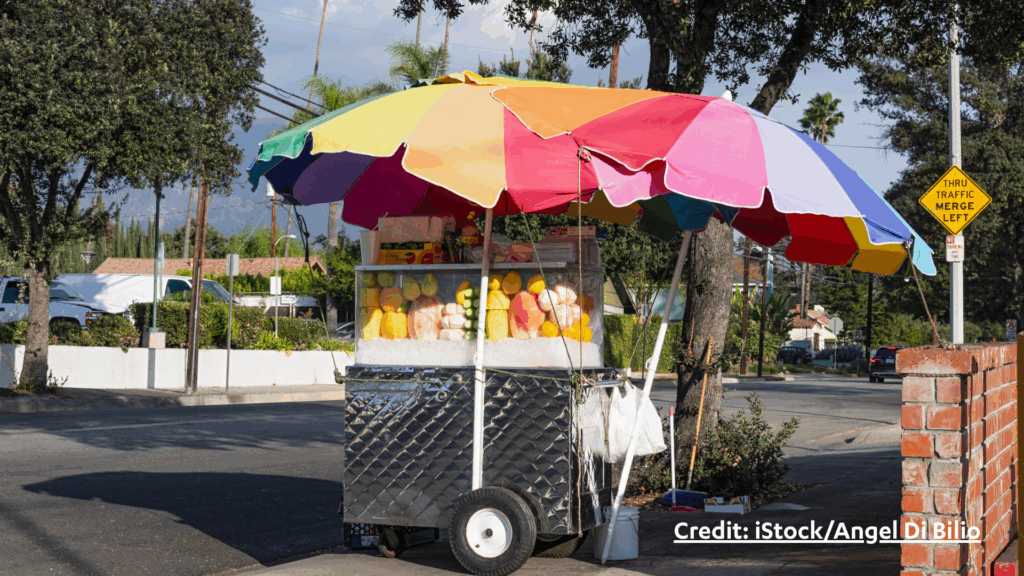When Extreme Heat Becomes the Opponent

During my high school cross-country meets in Los Angeles, the competition doesn’t always feel like it’s just between runners. Sometimes the toughest opponent is the sun. I’ve watched teammates collapse to the floor after races, fighting off nausea from dehydration. On most days, practices stretch late into the afternoon, and the heat lingers long after we’ve finished our workouts. Without shaded fields or cooling tents, teams like mine face real risks, from heat exhaustion to slower recovery times, and those risks reach beyond just race times.
The heat that sidelines athletes also hits vendors. Fruit carts, paleteros, and snack stands line the walkways at these events, but when the temperatures spike, customers drift away, causing a steep drop in sales. Many microbusiness owners stand for hours in direct sunlight, without breaks or relief.
These small businesses are more than just transactions; they’re traditions that give sporting events in Los Angeles their community feel. Extreme heat threatens both the livelihoods of these vendors and the culture they bring to the sidelines.
The risks athletes and vendors face aren’t separate—they’re connected and part of something larger: the way extreme heat hits Latino neighborhoods harder than others in Los Angeles and across the state. Data from the Latino Climate and Health Dashboard shows Latino neighborhoods in California experience about 60 extreme heat days a year—23 more than non-Latino white neighborhoods. With less tree cover (4% vs. 18%) and more asphalt that traps heat (56% vs. 28%), outdoor spaces in these areas can be dangerous. And with more children and fewer older adults than white neighborhoods, young athletes like us are especially vulnerable to heat-related illnesses.
And extreme heat exposure isn’t just a weather problem; it’s an equity problem. Decades of decisions about urban planning, green space, and investment have left many communities without the protections they need. That means something as routine as a soccer game or track meet comes with added risk for the very people who should be able to enjoy them.
Solutions are possible. Shaded fields, hydration stations, and protections for vendors would make a real difference. Communities are already improvising with pop-up shade and shared water, but that alone isn’t enough. Policy change and investment are essential if we want to keep both athletes running and vendors serving—and protect our neighborhoods as extreme heat becomes more common with climate change.
Chloe Cardenas is a research intern at UCLA LPPI. She is a senior at Eagle Rock High School in Los Angeles.








